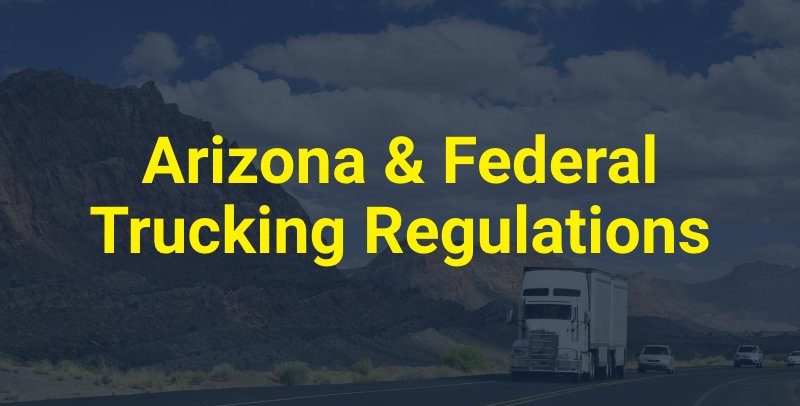If you’re looking to get a Commercial Driver’s License (CDL) in Arizona, there are several steps and requirements to be aware of. From gathering the right documentation and passing tests to understanding federal regulations, it can feel like a lot to take in.
Keep reading as our Phoenix truck accident lawyers walk you through the key CDL requirements, including the age and weight limits, training and medical exams, as well as federal rules on driving hours and substance testing.

Several criteria exist in Arizona and federal trucking regulations for drivers seeking a commercial driver’s license (CDL).
Applicants must produce numerous pieces of documentation in order to receive a Commercial Driver’s License, including proof of their authorized presence in the U.S., proof of Arizona residence, and Social Security papers. Drivers must also pass a background check.
Once applicants have all this together, they can take a knowledge test to receive a Commercial Learner’s Permit (C.L.P.). Afterward, they must pass a practical driving skills test with the C.L.P. before receiving their CDL.
Under federal rules, drivers applying for a first-time Class A or Class B CDL after February 7, 2022, must complete entry-level driver training with a registered provider before testing. Applicants must also pass vision screenings and medical examinations to obtain a CDL.
Medical exam certificates must be kept on file with the state D.M.V. and updated every two years for the license to remain valid.
For intrastate operations (within state lines), drivers must be at least 18 years old. Only drivers over 21 are eligible for interstate.
Under A.R.S. §28-1100, the maximum allowable weight on any single axle of a vehicle is 20,000 pounds, including enforcement tolerances. The maximum allowable weight on a tandem axle vehicle—two axles connected by an interconnecting system—is 34,000 pounds, including enforcement tolerances.
The maximum allowable weight of a vehicle combination with five or more axles is 80,000 pounds, including enforcement tolerances.
Many big-rig drivers are paid by the mile, which creates an incentive to drive long distances quickly. This could lead to driver fatigue due to a lack of rest.
As a result, there are federal laws regarding the number of hours a driver can work. Federal law states that commercial truck drivers may operate their vehicle for up to 11 hours within a 14-hour workday. After reaching this limit, they must rest for ten consecutive hours before they can start driving again.
Drivers can drive up to 60 hours in 7 days and 70 hours in 8 days; however, they need to take 34 or more hours off duty after reaching this limit to restart their time.
These laws and regulations are put in place with safety as the priority, ensuring drivers get the necessary rest and avoiding overworking and exhaustion while driving.
To maintain safe driving standards and comply with Federal Motor Carrier Safety Administration (FMCSA) regulations, commercial drivers are obligated to submit to alcohol and drug testing.
This includes pre-employment and reasonable suspicion testing, post-accident tests, random drug tests, random tests for 50% of the company’s drivers, random alcohol tests for 10% of the company’s drivers, and return-to-duty tests.
The FMCSA has also established a BAC limit of 0.04% for all commercial drivers, which is half the legal limit for non-commercial drivers. Your employer can terminate your employment if your B.A.C. exceeds 0.04%. Additionally, commercial operators who drive under the influence may face serious legal sanctions.
The consequences for operating without the required license or for breaking other regulations can be severe for the driver and their employer.